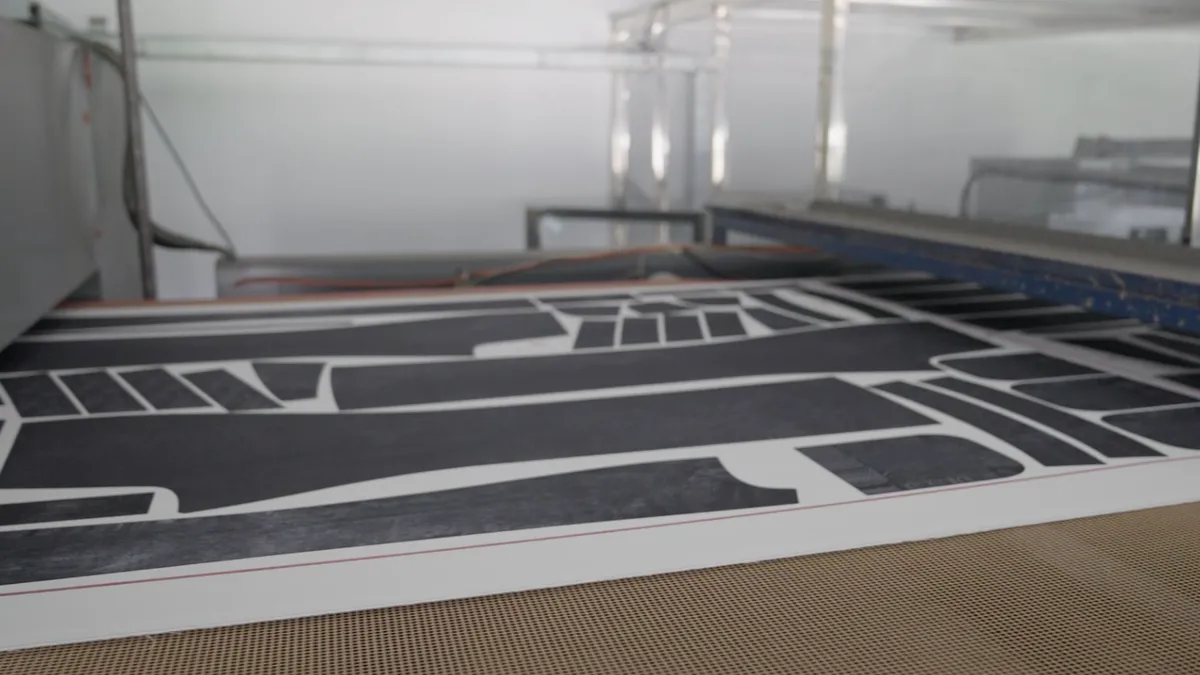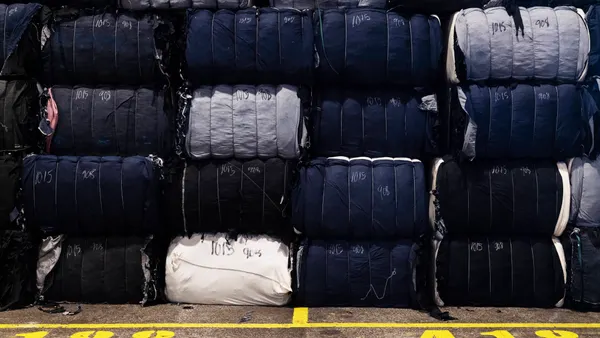Dive Brief:
- Shein increased the amount of denim it produced with its Cool Transfer Denim printing tech by 90% in 2024, according to a news release Monday.
- The technology is meant to consume less water and energy compared to traditional means of denim production. Shein said in the release that it also creates a more streamlined production process.
- The company uses a digital printer with reactive ink to print denim textures, artwork and patterns on transfer film, according to the release. The designs are then printed onto white denim fabric using cold transfer equipment. Shein said this process replicates the faded, whiskering and retro-worn effects of distressed denim while using 70.5% less water than conventional denim washing methods, per the release.
Dive Insight:
Shein first introduced this method, which was developed in partnership with NTX, in 2022. In the years since, it has saved nearly 19,500 metric tons of water, per the release. Shein additionally said the process reduces the risk of workers being exposed to potentially harmful substances used in traditional denim production, including chlorine and caustic soda.
Shein is positioning the denim printing tech as part of its strategy “to accelerate change in manufacturing processes, become more resource-efficient and promote innovation in the future of fashion.”
The process aligns with the company's business model of quickly producing a small amount of products based on consumer demand, per Shein.
That production process is part of what helped the fast fashion giant gain popularity but also brought on controversy. Shein has been the subject of governmental investigations for its sourcing and digital practices in multiple countries. It additionally faced consumer skepticism because of the fast production model’s environmental impact.
Shein has also recently instituted several sustainability programs and received certifications for various ESG issues.
In December 2024, it created two independent advisory boards to help it reach its sustainability and corporate responsibility objectives. The month before, one of its facilities received a Zero Waste to Landfill Management System certification from an independent auditor.











